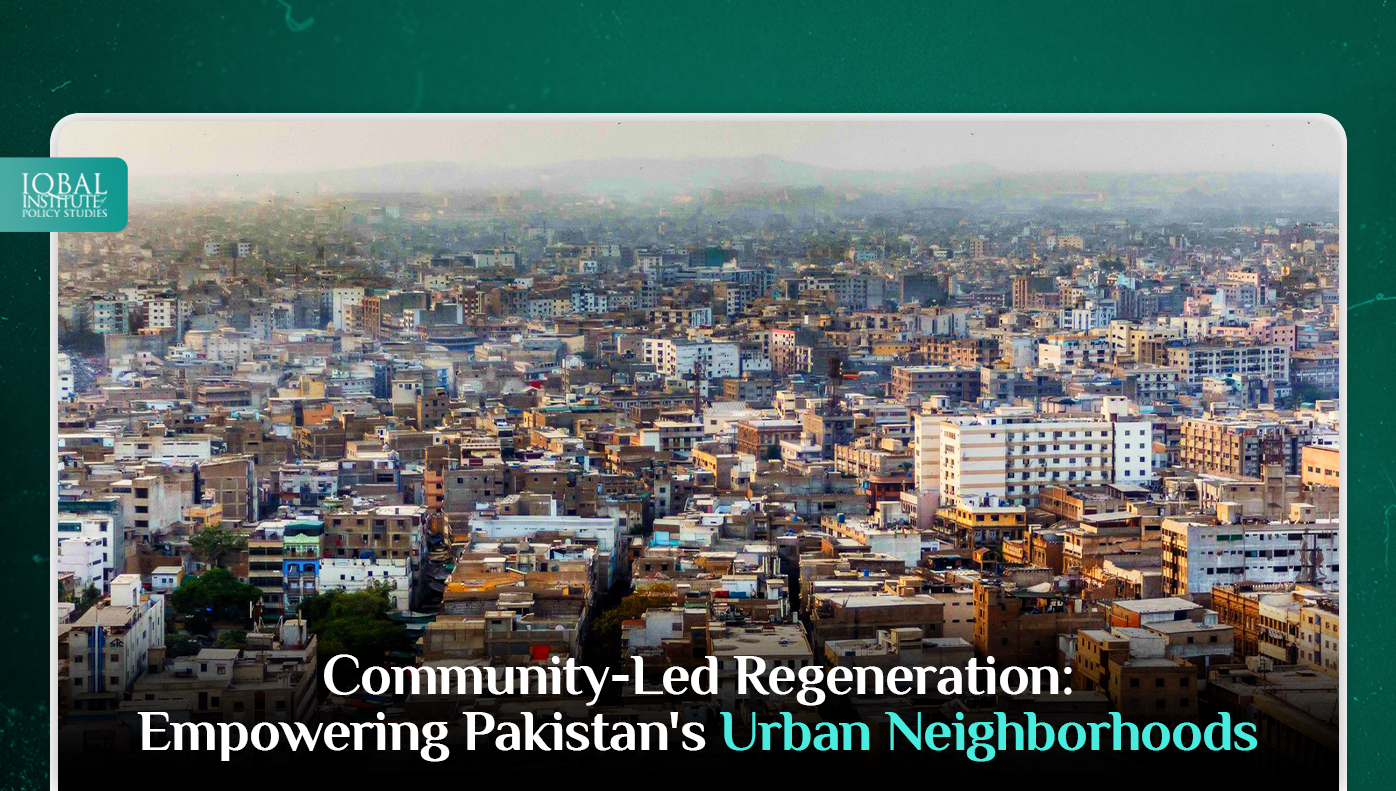Pakistan, a country of diverse landscapes and vibrant culture, is in the midst of rapid urbanization. With over 36% of its population residing in urban areas, Pakistan faces the dual challenge and opportunity that comes with urban growth. As cities expand, it becomes increasingly imperative to focus on community-led regeneration as a means to ensure sustainable development and empower urban neighborhoods. In this comprehensive blog, we will delve deeply into the concept of community-led regeneration and its significance in the context of Pakistan and provide an extensive exploration of success stories, challenges, and potential solutions.
Understanding Community-Led Regeneration
Community-led regeneration is a dynamic and participatory approach to urban development that lies at the heart of empowering Pakistan’s urban neighborhoods. It stands as a departure from conventional top-down planning and development models, where decisions are often made by distant authorities or corporations, neglecting the voices and unique needs of local communities.
At its core, community-led regeneration recognizes that communities themselves are the experts of their neighborhoods. They intimately understand the intricacies, challenges, and opportunities that exist within their urban landscapes. By actively involving residents, businesses, and organizations in the revitalization process, community-led regeneration seeks to empower individuals and groups to take ownership of their urban spaces.
This approach prioritizes inclusivity, fostering a sense of belonging, and promoting social equity. It ensures that marginalized groups, who often bear the brunt of urbanization’s adverse effects, are not only included but actively engaged in decision-making. Moreover, it places a strong emphasis on preserving cultural heritage and integrating sustainable practices into urban development, aligning with Pakistan’s rich history and addressing its pressing environmental concerns.
Community-led regeneration, therefore, stands as a transformative force that empowers communities to shape their urban destinies, fostering vibrant, resilient, and sustainable neighborhoods. In the following sections of this blog, we will delve deeper into its significance in the context of Pakistan and explore successful case studies, challenges, and potential solutions to realize its full potential.
The Significance of Community-Led Regeneration in Pakistan
Inclusivity and Social Equity
Pakistan’s rapid urbanization often exacerbates existing social and economic disparities. The importance of community-led regeneration lies in its ability to bridge these gaps by actively engaging marginalized groups and ensuring their voices are not only heard but also heeded in the planning and development process. This inclusivity promotes social equity, reducing the risk of exclusion and gentrification in urban neighborhoods.
Preservation of Cultural Heritage
Pakistan boasts a rich cultural heritage, with historic neighborhoods and sites that require careful preservation. Community-led regeneration initiatives are ideally positioned to emphasize the significance of cultural heritage, seamlessly integrating it into modern urban development while ensuring its protection and conservation.
Sustainable Urban Development
Sustainable development is paramount to addressing Pakistan’s pressing environmental challenges. Community-led initiatives have the potential to prioritize eco-friendly solutions, such as the creation of green spaces, investment in public transportation, and the adoption of renewable energy sources. These steps contribute to more sustainable and resilient urban neighborhoods, which are better equipped to tackle climate change and related challenges.
Success Stories of Community-Led Regeneration in Pakistan
The “I Am Karachi” Initiative
“I Am Karachi” stands out as a remarkable example of community-led regeneration in Pakistan. Launched in 2015, this initiative set out to reclaim public spaces and encourage civic engagement in Karachi. Through an array of activities such as public art installations, cleanup drives, and cultural events, “I Am Karachi” has successfully revitalized several areas in the city, fostering a profound sense of community and pride among residents.
The Anarkali Bazaar Revival
Anarkali Bazaar in Lahore, a historic market dating back to the Mughal era, had long been neglected and suffered decay over the years. In response to this decline, local shopkeepers, residents, and activists came together to initiate a regeneration project. This collaborative effort resulted in the restoration of the market, preserving its invaluable heritage and simultaneously boosting economic opportunities for the local community.
Challenges and Potential Solutions
Lack of Resources
One of the most significant challenges facing community-led regeneration efforts is the limited availability of resources. To address this issue, governments and non-governmental organizations (NGOs) can take proactive steps by providing financial support, technical expertise, and capacity-building programs. These initiatives will empower communities to initiate and sustain redevelopment projects effectively.
Regulatory Barriers
Complex regulations and bureaucratic hurdles can pose significant obstacles to community-led initiatives. Streamlining approval processes, offering transparent and straightforward guidelines for community-driven projects, and establishing dedicated offices or liaisons for these endeavors can make it easier for residents to engage in regeneration efforts.
Public Awareness and Participation
Encouraging public awareness and participation are paramount for the success of community-led regeneration initiatives. Governments and organizations can invest in community outreach programs, educational workshops, and awareness campaigns to engage a broader cross-section of residents in the process. This would ensure that the regeneration efforts genuinely reflect the collective aspirations of the community.
Conclusion
Community-led regeneration is an influential tool for empowering Pakistan’s urban neighborhoods. By fostering inclusivity, preserving cultural heritage, and promoting sustainable development, this approach holds the potential to address the multifaceted challenges associated with rapid urbanization while significantly enhancing the quality of life for urban residents. Success stories like “I Am Karachi”, and the Anarkali Bazaar revival vividly demonstrate the transformative power of community-led initiatives in revitalizing urban spaces and creating vibrant, resilient neighborhoods. With the right support, dedication, and commitment from all stakeholders, Pakistan’s cities can thrive and prosper through the collective efforts of their residents, ensuring a brighter and more sustainable future for all.
This article is written by Radma Nouman. Radma is a research analyst at the Iqbal Institute of Policy Studies (IIPS).



Leave a Reply